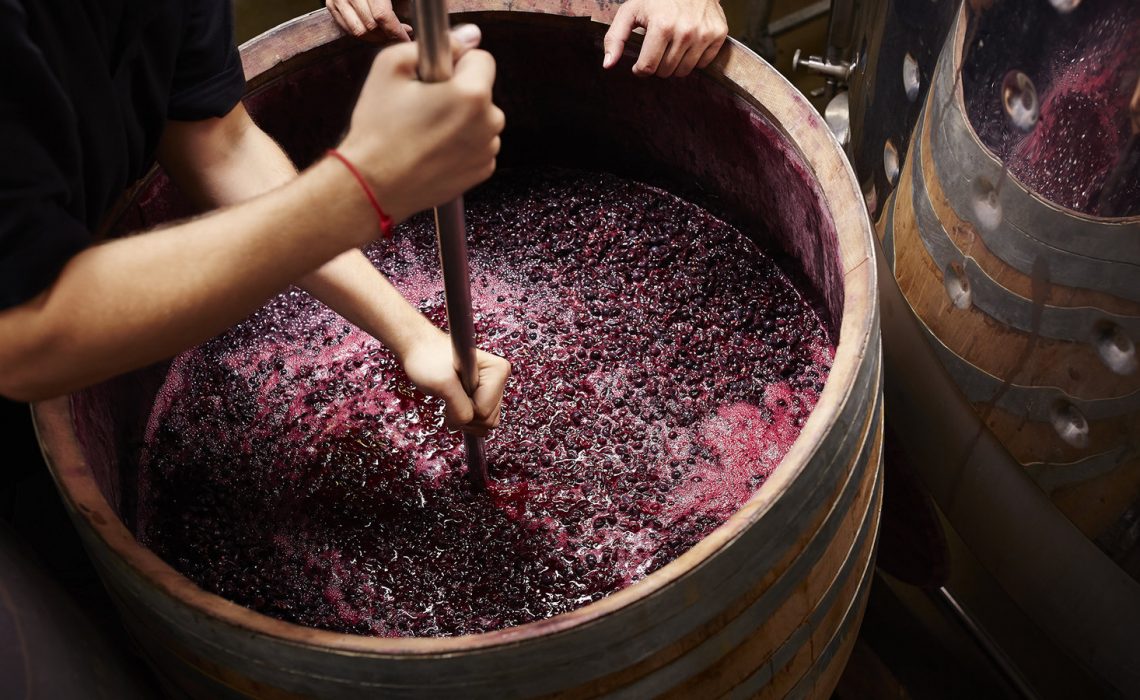We all know that the wine comes from the grapes and that the first step in the winemaking process is the grape harvest. But what happens next? After every grape harvest, the process called fermentation takes place. Fermentation is the key part of the winemaking process where the science comes in. What is fermentation and how to ferment grapes? Find out below!
What is Fermentation?
The process of fermentation in winemaking turns grape juice into an alcoholic beverage. In very general terms a wine fermentation occurs when yeast consumes sugar from the grape juice and converts it into approximately half alcohol and half CO2 gas.
Fermentation is usually done in opened vessels for must to get in touch with oxygen from the air. Oxygen plays an important role in multiplication of the years. During the fermentation, most of the sugar is converted into alcohol. After the fermentation is over, alcohol levels have risen up to the point that it is affecting the yeasts ability to reproduce.
To create sweet wine, winemakers sometimes stop the fermentation process before all sugar converts into alcohol. Fermentation can last from few days to one month and more.

In winemaking, there are different processes under the term “fermentation” that usually don’t follow up the same described procedure. Such processes are:
- Bottle fermentation: the method used when producing sparkling wines.
- Carbonic maceration: common method in producing the Beaujolais wine.
- Malolactic fermentation: a method where the specific bacteria has a key role in fermentation. This process decreases the acid in the wine and softens the taste of the wine.
Yeasts in Fermentation
In winemaking, different types of yeast are used for fermentation. Distinctions are made between yeasts which are naturally present in vineyards and grapes and cultured yeasts which are isolated specifically for winemaking. Conventionally grown grapes have little or no wild yeast living on their skin. Natural wines are fermented only with the wild yeasts characteristic for the region’s terror, but many winemakers prefer predictable cultured yeasts in fermentation.
The most common commercial yeast used is Saccharomyces cerevisiae, which is also used in bread making and brewing.
Things to Consider in Fermentation
- The temperature has an important role in fermentation. Low temperatures usually lead to poor fermentation and higher temperatures can greatly affect wines flavour.
- Sulphur should not be added during fermentation, as it may kill the yeasts. If you want to allow malolactic fermentation after the primary fermentation, sulphur should not be added in such wine because it would prevent secondary fermentation from happening.
- Without the use of sulfur dioxide, wines can suffer bacterial spoilage no matter how hygienic the winemaking practice.



